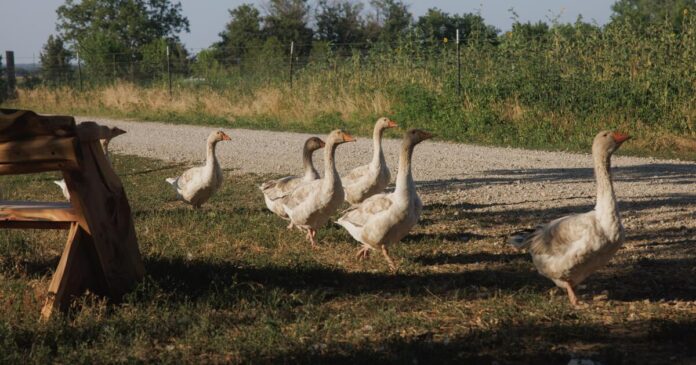Over the past 20 years, my mom has devoted herself to making a small homestead farm in upstate New York. I’ve had a front-row seat to the tribulations and glories of elevating a big flock of chickens, beginning an orchard and cultivating an expansive vegetable backyard. Up with the solar, endlessly shoveling poop, endlessly weeding, endlessly making an attempt to outwit pests and predators, endlessly praying for rain however not an excessive amount of without delay. (Clearly, rising meals is difficult sufficient with out additionally having to cope with local weather change, with the adjustments in seasons and excessive climate it brings.)
Not precisely a chill retirement for my mother, however definitely a gratifying one. She is enamored with the idea of climate victory gardens, of rising your personal meals as an act of pro-Earth patriotism. It’s wonderful how a lot meals you’ll be able to develop on a single acre. Now we have (in my biased opinion) the world’s most stunning chickens gallivanting amongst fruit and shade timber, consuming bugs and comfrey and our leftovers and no matter greens they will pilfer from the raised beds, fertilizing the soil with their feces and laying excellent eggs.
Like many, I descend from farmers and fishermen once you return a number of generations. Again to when meals was actual, native and contemporary by default, when there was no want for the time period “natural.” At this time, as an alternative of various crops and animals, built-in and nourishing one another and the soil with flourishing microbiota, we now have a high-pesticide, long-distance, ultra-processed, principally monoculture situation. That is unhealthy for us and for ecosystems. Vitamins in some greens are as much as 30% lower in comparison with the Nineteen Fifties. (It’s a must to eat three times as much broccoli to get the identical quantity of calcium!) The ocean facet of issues has headed in an identical route, with overfishing and aquaculture that destroy habitats and have horrific information of human rights abuses.
That is partly a cultural challenge. In contrast with folks in different wealthy nations, folks within the U.S. spend the least on food as a proportion of revenue and the most on healthcare. We count on meals at bargain-basement costs and subsidize all of the mistaken issues, like fossil fuels and corn ethanol, whereas growers are in a race to the underside of pricing to the detriment of farmworkers, eaters and biodiversity alike.
Globally, analysis signifies that the meals system is the supply of 33% of greenhouse fuel emissions. We’re informed it must be this manner with the intention to feed the estimated 8 billion people on the planet. However clearly, there’s ample room for enchancment.
Soil, the spine of farming, is a powerful substrate that may take up gigatons of carbon from the ambiance — however provided that it’s alive, webbed with roots and teeming with microorganisms. To revive our agricultural soils, we have to reembrace use of regenerative natural practices. That features maintaining roots within the floor, at all times — by no means naked and vulnerable to erosion — by lowering tilling, and planting cowl crops and perennials. We have to develop a higher range of crops, rotate these crops, use compost to replenish the vitamins within the soil and eradicate fossil-fuel-intensive chemical pesticides and fertilizers.
Reembracing these practices of regenerative agriculture will nurture wholesome soil, which makes for wholesome vegetation that gather atmospheric carbon dioxide by way of photosynthesis. This CO2 is used to each construct the vegetation’ tissues and feed carbon to the microorganisms (a.okay.a. microbes) at their roots that deposit carbon into the soil. Together with worms and different critters, these microbes (equivalent to micro organism and fungi) enable extra absorption of water (as an alternative of runoff), decompose natural matter and assist switch minerals from the soil into the plant roots. Good for the water cycle, good for the carbon cycle, good for biodiversity. A virtuous symbiosis readying soil for future seeds.
Some model of “again to the land” must be a part of our local weather answer: extra folks farming once more. Leah Penniman and her household began Soul Fire Farm, additionally in upstate New York, in 2006. They’ve been manifesting such a imaginative and prescient, rising meals in a method that’s grounded in neighborhood, justice and meals sovereignty. I first discovered of Penniman in December 2016, after I acquired an e-mail from my mom containing a hyperlink to an hour-long video I ended up watching in full. It was of Penniman talking at a Northeast Natural Farming Assn. convention.
After I interviewed Penniman for my e-book, she helped me see how farming and our meals system can and should rework. Amongst her placing insights was tips on how to deal with carbon not as an enemy however as a pure factor that has been misplaced.
We’ve vilified carbon as a driver of local weather change, however carbon is the constructing block of all life. It’s simply within the mistaken place. It’s within the ambiance as methane and carbon dioxide, inflicting the greenhouse impact. We want it within the soil and within the our bodies of dwelling issues.
Or as Penniman put it, “Carbon is life,” one thing we’d like “again within the soil ecosystem the place it’s doing immense good, feeding us and stabilizing the soil when the waters come.”
I take additional inspiration from one thing Larisa Jacobson at Soul Hearth Farm informed Penniman: “Our job as farmers is to name the carbon and name the life again into the soil. That’s our No. 1 obligation as farmers.”
Ayana Elizabeth Johnson is a marine biologist and coverage knowledgeable. She is co-founder of the nonprofit assume tank Urban Ocean Lab, distinguished scholar at Bowdoin Faculty, co-editor of the bestselling local weather anthology “All We Can Save” and creator of “What If We Get it Right?: Visions of Climate Futures,” from which this piece is customized.

